Improper attachment of the
leash in the main line reduces the strength of the tackle many times over. It is generally accepted that a knot that is in water is a quarter less strong than usual. When tied, at the moment of tightening, it is subjected to strong forces of friction. In this case, the line may be burned out. To ensure that the use of knots when knitting tackle does not reduce its strength to an unacceptable level, it is necessary to use those knots that are best suited for a particular situation.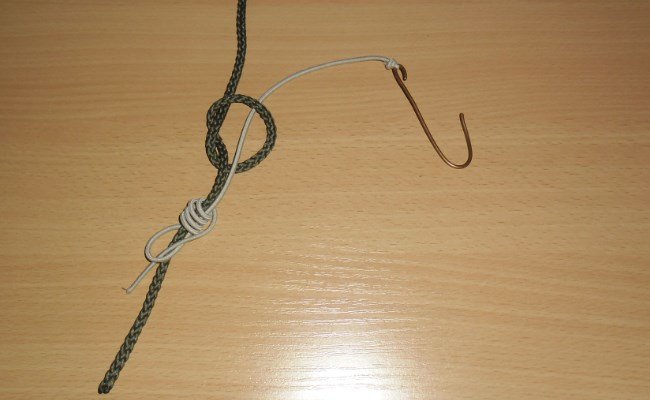
- The knot must be secure so that the fish cannot untie it with their jerks. So that it does not bloom under load.
- It is made compact . This is necessary so that it passes freely through the rings of the spinning rod , donkey , and feeder . If the knot is bulky, then in some cases it will be able to cling to water debris.
- If the leash is attached at a 90 degree angle, it must maintain its position underwater . This is important to avoid tangling the line or leash.
When knitting knots, specific situations may have their own subtleties. We can say that a good knot is one that helps make a good catch. How to tie a leash to the main line on a spinning rod: https://youtu.be/HCXnmdG13wc
How to tie a thin lead to a thick main line
It is convenient to use a bloody knot to connect lines of different diameters. To tie the leash to the main line so that it does not get confused, you need to perform the following operations:
- You need to position the line and leash so that their ends are located next to each other.
- Each end makes 4-5 turns around the other part of the line. Turns for each of them are made from the tip towards the main part.
- It is necessary that each of them has a tip of sufficient length. The wound parts separate a little, moving inward. Both tips are inserted between them towards each other.
- The knot is moistened and tightened evenly.
All stages of tying are shown in the diagram.
- The ends of the line and the leash are placed next to each other.
- The leash should be wrapped around the line. Then it is carried out from below and grasping the leash and fishing line at the same time. After that, they lead from above, then they are carried out under the main line, above the leash and under the outer part of the leash.
- Then the tip of the leash is threaded into the loop made.
- The knot on the leash is tightened.
- A similar one is tied around the leash. It also needs to be tightened.
- Now you need to grab the threads and pull. The nodes will move closer together.
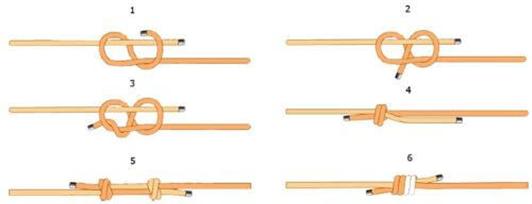
How to tie a leash – line to the main braid
The choice of the best knot for the braid depends on its type. The cord can be made in two ways:
- Several fibers are intertwined.
- The fibers that make up the braid are glued together.
The manner in which a particular cord is made can be visually determined. Depending on it, you should select the best node for it. If the structure of the line is woven, then such cords are highly resistant to deformation. Knots where the tightening is too tight will not work for them. Cords created by gluing should be used in knots where the amount of tightening is low. Often fishermen use the loop-to-loop knot. It is made in this way:
- The line is folded in half to the desired length.
- They are wrapped around the fishing line 2-3 times.
- The double thread is inserted into the formed loop.
- The knot should now be tightened well. The double tip now forms a non-tightening loop.
- This loop is done again on a leash.
- To tie them, the loop on the main line is pushed into the leash loop. After that, the leash from the other end is threaded into a loop made on the main line. Then the resulting knot is tightened.
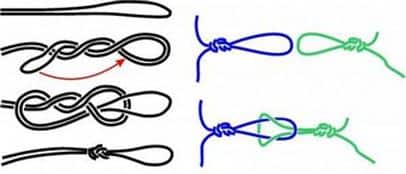
- The two threads are laid parallel to each other for the desired length.
- Having folded the tip in half in one, it is carried over both threads.
- With this tip, both threads are wrapped three times so that it passes inside the loop made.
- The knot needs to be tightened.
- The same operations are performed for the tip of the other thread.
- After the second knot is tightened, they are moved in the opposite direction.
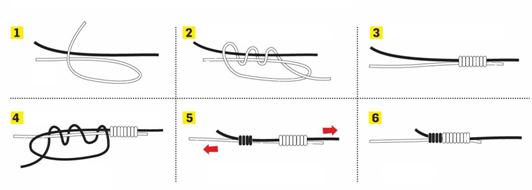
fluorocarbon leashes .
How to knit fluorocarbon leashes with main line
You can attach a fluorocarbon leash to the fishing line
using the Albright knot. It is knitted as follows:
- The line and the leash are positioned in such a way that their ends are parallel to each other.
- The tip of the main line is folded in half. The leash is threaded inside the fold.
- It is repeatedly wrapped around the doubled part of the line, moving from the main part to the end.
- When they reach the edge of the loop, the tip of the leash is threaded inside the fold.
- Now the knot must be tightened, pre-moistened.
Details of the procedure for creating a node can be specified in the following diagram.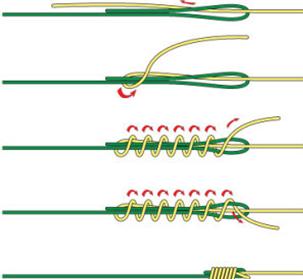
How to tie fluor and braid
When considering the nodes in which the braid participates, it is necessary to take into account the peculiarities of its structure. If we are talking about thick braids, then most fishing knots are suitable for them. It is necessary to take into account the cross-sectional shape of the fibers of which it consists. It can be round or square. In the latter case, there is a high risk of kinking, which reduces the strength of the joint. In order to tie fluorocarbon and braid, you can use a triple knot. It is knitted as follows:
- The line and the leash are placed parallel to each other so that the ends of the threads point in one direction.
- Keeping both threads together, make a simple loop without tightening it.
- The double edge is carried inside 5-6 times.
- Take the double end with one hand, the main part of the line with the other and tighten the knot. To correctly form the knot, pull each thread separately at the end of the tightening. The protruding ends must be cut off.
This diagram shows each step of the node creation: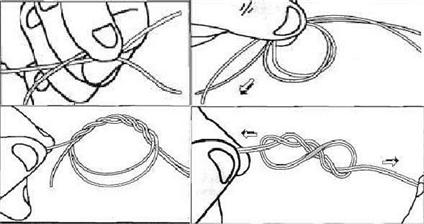
- Both ends of the line are kept parallel to each other.
- One of the lines is overlapped around the other, placing a nail or a straw. It is not necessary to use them, but it makes the procedure more convenient.
- They make six turns around the fishing line with a straw, gradually moving in the opposite direction.
- Then the tip is threaded inside the loops made. It is convenient to do this through a straw.
The scheme of work is shown in the figure: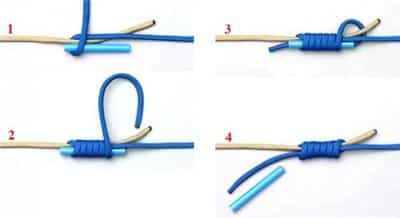
How to tie a leash to your main line at 90 degrees – the easy way
You can use the running knot to tie the leash to the straight part of the main line. To do this, perform the following actions:
- A simple loop is made on the main line.
- The tip of the leash is passed through it in a special way. To do this, it is carried out under the outer edge of the loop and over the other two threads. In the opposite direction, it is moved under the outer, above the central and under the outer edge of the node.
- It is important that after tightening, the tip of the leash cannot slip out. Therefore, a simple knot is made on it and tightened. This can be done in advance.
- Now the knot is tightened.
The tying process can be clarified by looking at the following diagram:
- A loop is made on the main line using a figure eight knot . To do this, first fold it in half in this place.
- The double part is folded, and the tip is carried around the main part, then it is threaded into a loop and tightened.
- You need to prepare a leash. For this, an eight is made at its end. To do this, the thread is bent, draped around the main part and threaded into a loop. After that, the knot is tightened.
- The tip of the leash with a knot is pulled through the loop on the main line. Then they bring it back through the loop. The knot can now be tightened.
The details of the procedure can be understood from the picture: The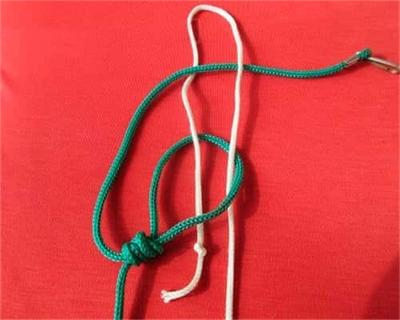
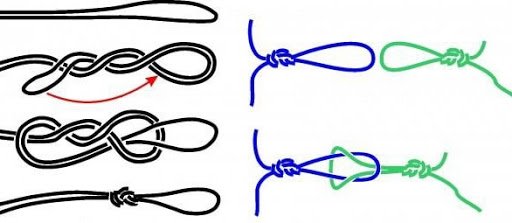
Tips and Secrets
It is important not only to choose the right knot, but also to adhere to the general rules of knitting. When tightening, the line is strongly influenced by frictional forces. Burnout can reduce the strength of the knot to a critical level. To prevent this from happening, it is necessary to lubricate it before tightening, or at least just moisten it. In order for the nodes to be more durable, you must adhere to the following rules:
- If you have to wind on a reel, you need to do it with an even and constant tension in order to prevent loosening.
- During tying, you need to act smoothly, without overtightening or leaving voids.
- When knitting, you need to pay attention to the ends. It is advisable to melt them a little in order to prevent the threads from shifting during the use of the tackle.
- The choice of a suitable leash is made taking into account the fish that you plan to catch and the tackle that will need to be used.
- Some fishermen use fast-setting glue to ensure bond strength.
- The strongest knot is obtained when both lines are approximately equal in diameter.
- Wetting the fishing line while knitting a knot has a positive effect on its strength.
How to tie a metal leash to the main line: https://youtu.be/s8qhNO4svZY Another secret of how to tie two leashes to the main line so as not to get confused: https://youtu.be/vIeUhiIdETw And a photo of how to tie two leashes to they did not get tangled or stick together: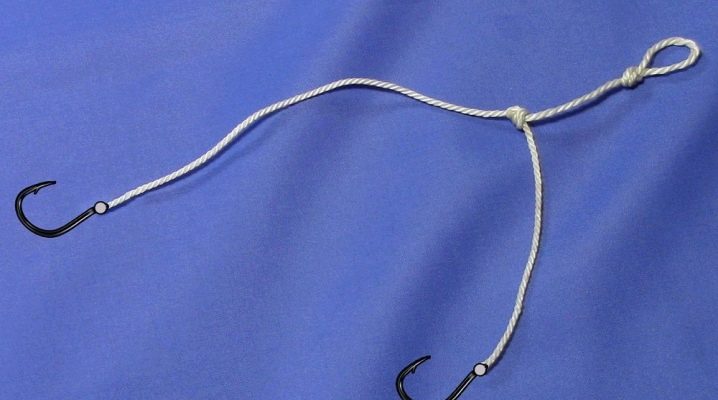
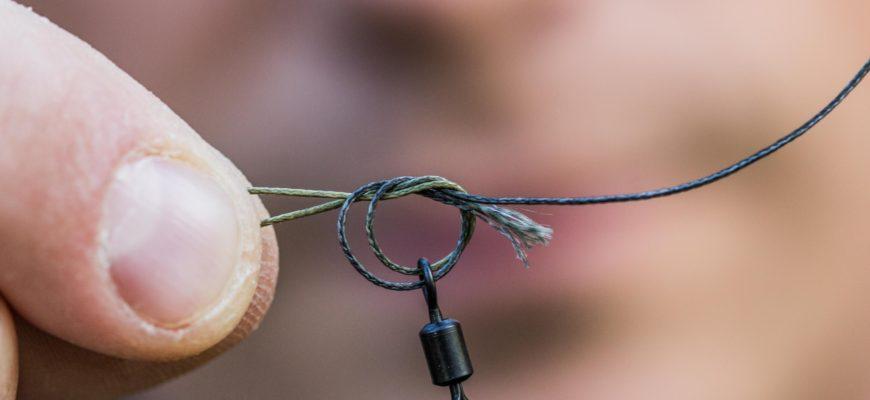
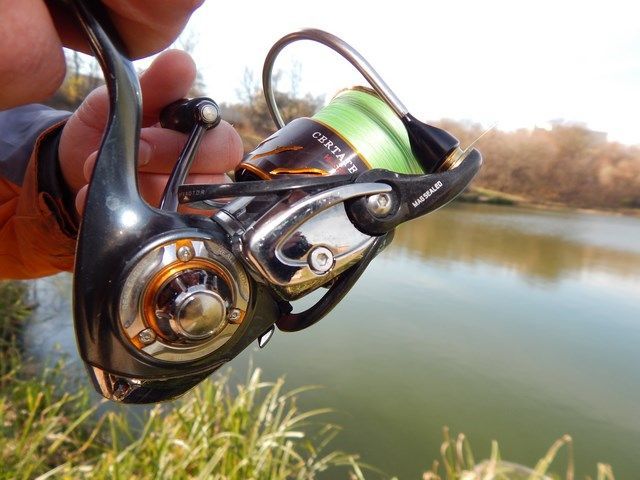


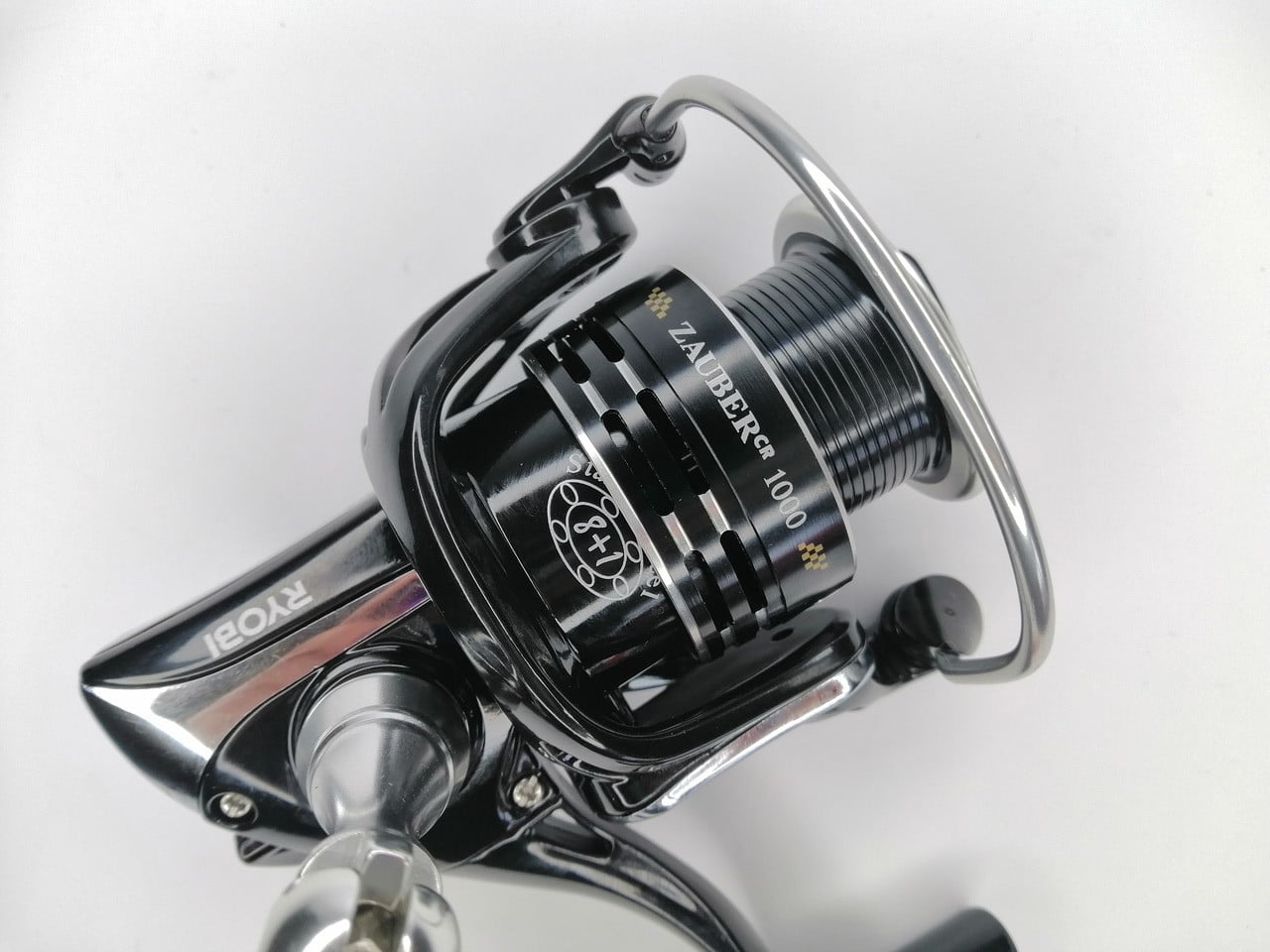
mangler video